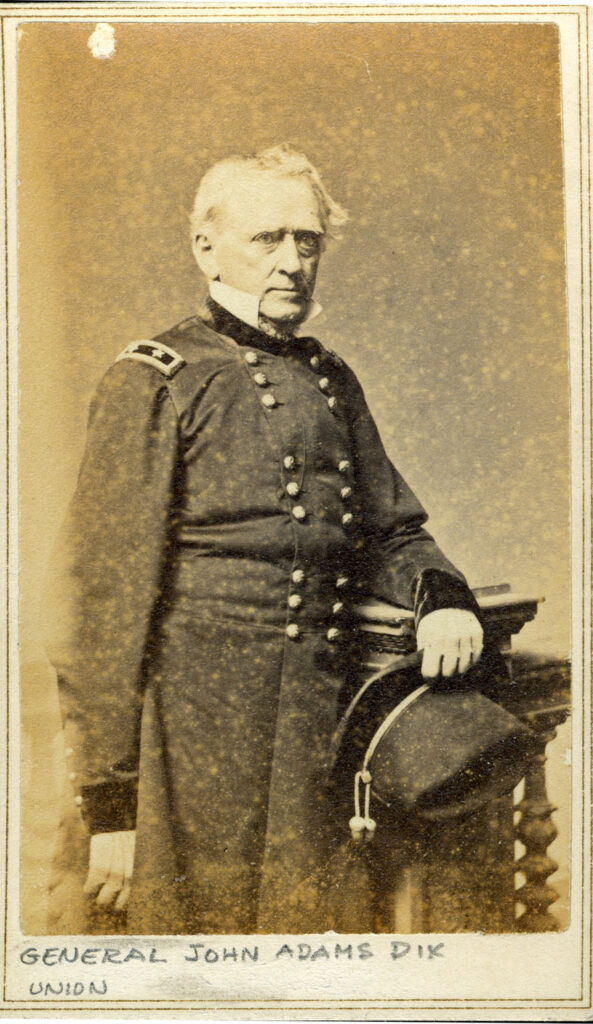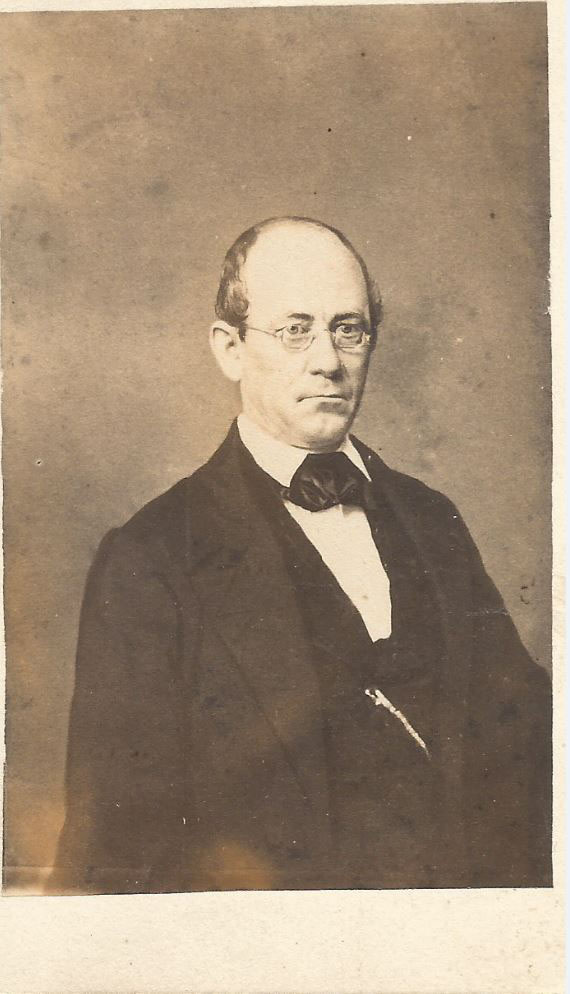Section #22 - The Southern States secede and the attack on Ft. Sumter signals the start of the Civil War
Chapter 273: Pressures On Buchanan Continue To Mount
January 29, 1861
A New “Threat To The Flag” Materializes In New Orleans

On January 29, Buchanan’s newly appointed Secretary of the Treasury, John Dix, receives a telegraph message saying that secessionist forces are threatening a U.S. revenue ship around the port of New Orleans – and that the captain seems to be putting up little resistance.
Dix responds with the brand of fighting zeal that will marks his coming role as a Major General in the Union Army.
He sends an unequivocal order to a still-thought-to-be loyal lieutenant aboard the cutter:
If anyone attempts to haul down the American flag, shoot him on the spot.
This quote is quickly picked up by the nation’s 3,000 newspapers, making Dix an overnight hero across the North and fanning the flames of patriotism.
Like “Old Bob” Anderson at Sumter, Dix is ready to stand tall in support of the flag.
January 31, 1861
The “Pause” At Ft. Sumter Ends Abruptly
Two days after Kansas is admitted, Buchanan’s most pressing crisis intensifies as the two messengers from Charleston – Hayne and Hall – arrive with a message from Governor Pickens.
In it, Pickens first demands that Major Anderson abandon Ft. Sumter, after which he offers to buy it from the United States government!
Buchanan is taken aback by the proposal and intends to tell Hayne that Presidents have no authority to sell property. Before he can do that he finds that both men have already departed for Charleston.
But this latest exchange signals the end of the momentary “pause” created by Major Anderson.
February 1, 1860
Three More Southern States Secede
On February 1, Texas joins Georgia and Louisiana in the latest parade of states leaving the Union.
Secession Timing: First Seven
| 1860 | States |
| December 20 | South Carolina |
| 1861 | |
| January 9 | Mississippi |
| January 10 | Florida |
| January 11 | Alabama |
| January 19 | Georgia |
| January 26 | Louisiana |
| February 1 | Texas |
The Georgia Convention is held in Milledgeville with ex-Whig Governor George Crawford presiding. Three key state politicians – Howell Cobb, Robert Toombs and Alexander Stephens – have for years held out against efforts by South Carolina and John C. Calhoun to rebel against Northern transgressions.
But now they support the ordnance and it passes by a 208-89 count, with all three men soon destined to play key roles in the new Southern government.
Louisiana delegates gathered at Baton Rouge follow with a 113-17 vote in favor of the exit.
In the convention in Austin, pleas against joining a Southern confederacy by Sam Houston, the aging co-founder of the Republic of Texas in 1836, go unheeded, and the ordnance carries by 166-8. At this point Houston simply favors returning to “independent nation” status rather than getting entangled with other states in a possible losing war.
February 3, 1861
Virginia Settles On A “Wait And See” Plan At Its State Convention

All eyes now turn to Virginia which opens its convention to discuss secession in Richmond, two day after Texas exits.
The state’s history cries out for it to remain loyal, given its role in founding the Union, fighting for it under George Washington, and then begetting four of its first five presidents.
“Staying in” is the majority feeling among the delegates on February 3, 1861. It is also the preference of Governor John Letcher, who replaces the fiery secessionist, Henry Wise, on January 1, 1860, and also of John Janney, president of the convention and a founder of the Constitutional Union Party.
Still Wise has his pro-secession supporters, perhaps a third of those present, who are convinced that the Black Republicans intend to abolish slavery altogether once Lincoln takes power.
What further complicates matters is that those who are viscerally pro-Union, are divided as to the level of their commitment.
Some, like Congressman John Carlile, are unequivocal in condemning secession.
It is the result sir, of mature deliberation, concocted in treason, for the express purpose of breaking up constitutional liberty in this country… The plot was one that was conceived in perjury at Washington, and carried out by falsehood throughout the country, attended by coercion, intimidation, insult and a reign of terror, which was equally concerted throughout Virginia, as well as in the other Southern States.
(Carlile will ultimately lead a break-away movement in June 1861 that becomes the pro-Union state of West Virginia.)
Other Virginians, the “Conditional Unionists,” adopt more of a “wait and see” attitude – their key litmus test being whether or not Lincoln withholds the use of force in South Carolina.
Given these divisions, the convention is suspended with a target date of April 17 set to resume.